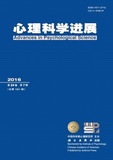Illegitimate tasks, as a new type of workplace stressor, has gradually become a frontier topic in organization and management research. Illegitimate tasks refer to the tasks that are inconsistent with employees' expected work scope and that are unnecessarily performed or not belong to someone, and they include unreasonable tasks and unnecessary tasks. This article introduces the concept and measurement of illegitimate tasks, and systemically reviews their influences on employees' emotion, cognition, motivation, work attitude, work behavior, physical and mental health, and work-family relationship. The review also indicates that the nature and magnitude of such influences depend on the characteristics of employees and situations where employees work. Stress-as-offense-to-self theory, justice theory, job demands-resources model, job characteristics model, affective event theory, and self-determination theory are primary explaining accounts for the influences. Future research is encouraged to expand the concept and level of illegitimate tasks, unpack and integrate the mechanisms underlining their influences, investigate their contingent effects, and identify antecedents of illegitimate tasks. Developing the research of illegitimate tasks in cultural context and cultural orientation is also needed.




